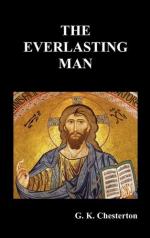|
This section contains 285 words (approx. 1 page at 400 words per page) |

|
Part II: On the Man Called Christ, Chapter I: The God in the Cave Summary and Analysis
Just as the first men, or so scientists believe, lived in caves, when God came to the Earth in the form of Jesus Christ, he was born into a cave that was converted in a manger for farm animals. The Incarnation represents a great paradox: the coming of the immense, infinite God into the body of a helpless, finite infant. It also simultaneously vindicates and reconciles the Pagan's simple but imaginative religion with the abstract and theoretical metaphysics of the philosopher. Christ confirmed the Pagan's belief that God is visible and tangible, but he also confirmed that God that is invisible and transcendent. This reconciliation is symbolized by Christ's first visitors: the simple, rural shepherds...
(read more from the Part II: On the Man Called Christ, Chapter I: The God in the Cave Summary)
|
This section contains 285 words (approx. 1 page at 400 words per page) |

|




